 Wondering what people think about your business?
Wondering what people think about your business?
Interested in using social media to improve your online reputation?
In this article, you'll learn how to research, manage, and protect your brand's reputation with social media.
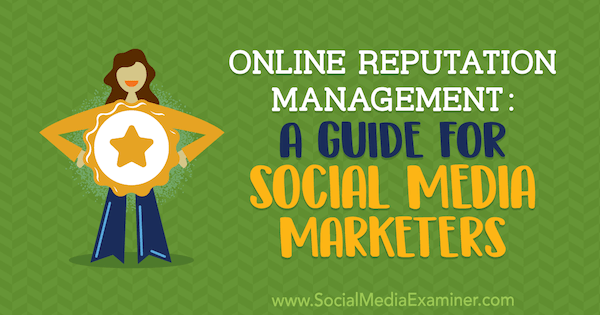
Online Reputation Management and How It Impacts Your Business
Your online reputation determines how others perceive your business when they search for or stumble upon it online. Consequently, online reputation management (ORM) proactively influences what information people will find.
For instance, various techniques and strategies can help you push damaging and harmful content further down the Google search engine results pages (SERPs) by ranking your own or third-party more desirable material above it. Why is this important? Because the top five listings in Google's search results receive about two-thirds of all clicks.
ORM is not only about managing content in search engines, though. It's also about managing negative business reviews and encouraging happy clients to contribute more positive feedback.
Did you know that according to BrightLocal, “85% of consumers trust online reviews as much as personal recommendations”? What's more, “49% of consumers need at least a four-star rating before they choose to use a business.”
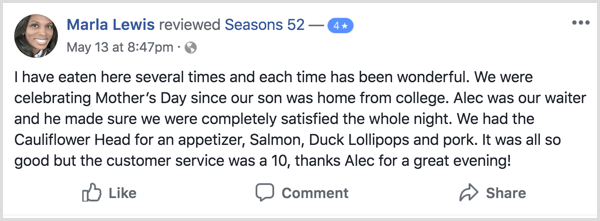
Considering these statistics, the importance of your online personal and professional reputation can't be understated. Here are the four distinct digital marketing channels involved in ORM, channels also referred to as the PESO Model.
Paid Media
Paid media includes all marketing efforts that require payment to feature your business on external websites and networks. This includes PPC advertising with Google AdWords, display ads on Facebook, and sponsored posts on industry/influencer blogs. Paid media extends your reach and drives traffic to your web properties by building new relationships with partners and customers.
Earned Media
Earned media describes the coverage of your business on external web entities for which you didn't pay. It requires you to stand out from your competition with great content, products, or services that users consider worth sharing, mentioning, reposting, and reviewing.
Get World-Class Marketing Training — All Year Long!
Are you facing doubt, uncertainty, or overwhelm? The Social Media Marketing Society can help.
Each month, you’ll receive training from trusted marketing experts, covering everything from AI to organic social marketing. When you join, you’ll also get immediate access to:
- A library of 100+ marketing trainings
- A community of like-minded marketers
- Monthly online community meetups
- Relevant news and trends updates

Social Media
Pages and profiles on social media are “an extension of your brand and create additional avenues for people to interact.” When it comes to social properties, it's important to dedicate the resources to stay active on them by engaging in conversations and publishing fresh content regularly. As a general rule: not having a profile on a certain network is better than having an inactive one.
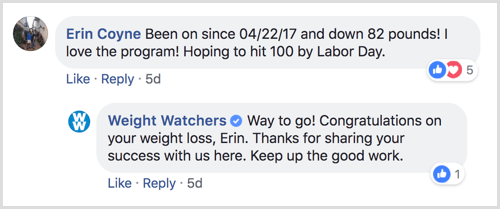
Owned Properties
Your business websites and blogs are properties owned by you, which means you have full control over them. Of course, the more properties you own, the higher your chances to effectively build your digital presence. At the same time, you don't want to cause confusion by establishing properties that can't be distinguished from one another.
Here's how to use these digital marketing channels to start building and managing a healthy online reputation for your business.
#1: Decide What You Want Your Online Reputation to Be
With ORM, the first step is to decide what you want your online reputation to be. Do you want to be perceived as an industry authority? To adopt the position as the market leader? Or be known for your responsiveness and excellent customer service?
#2: Assess Your Current Online Reputation
You can begin by determining what your actual reputation is. Ask friends, family, clients, business partners, and stakeholders what comes to mind when they hear your business's name. What do people already think about you? Does your digital presence match your reputation in your offline network? Listed below are five tools that will help you research and evaluate your digital reputation.
The Brand Grader
The Brand Grader (from Mention) provides an understanding of your brand's online presence for free. It will identify the most influential blogs and news websites that have published content featuring your business in the last 30 days and also show recent mentions from social sources. The tool also gives you a score that helps you identify strengths and weaknesses of your business's reputation.
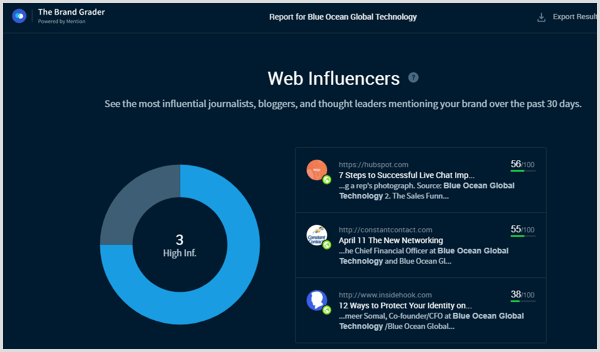
Go Fish Digital's Complaint Box
Go Fish Digital has designed a free tool that lets you browse more than 40 different complaint websites at once and provides you with a list of negative reviews. Although there's no guarantee of completeness, using the complaint box is a convenient way to get first impressions of any negative reviews or comments you've received online.
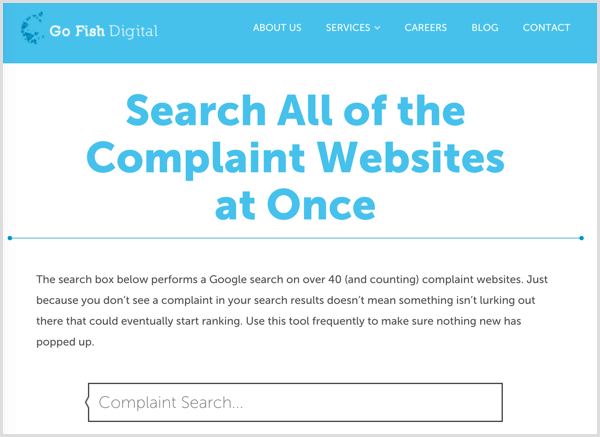
Mention
Mention is a platform that scans more than 1 billion sources from social media networks and forums to blogs and many other web properties. You can use it to track your brand, competitors, and customers by using different search criteria. Mention has plans starting at $25/$29 per month, but you can evaluate the tool during a free 14-day trial period.
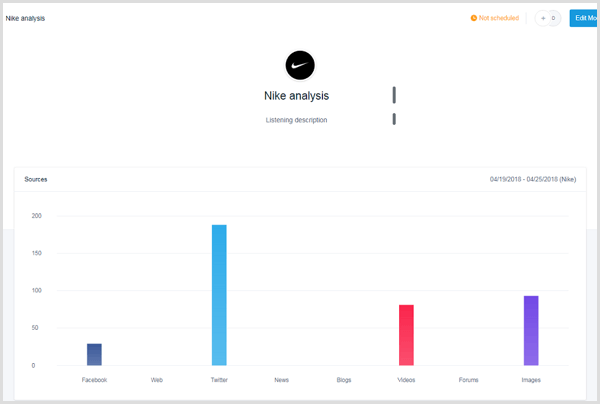
Google Alerts
With the help of Google Alerts, you can keep track of new content published about your business. In addition, you can monitor industry news and follow your competitors. This helps you identify new guest blogging and commenting opportunities.
To set up an alert, all you need to do is search for a certain keyword and decide how often you want to receive notifications about new content via email. You can also define content sources such as news websites, blogs, or videos, and choose a preferred language and geographic region.
What's great about Google Alerts is that it's free and includes all content currently indexed in Google, so you won't miss out on anything.
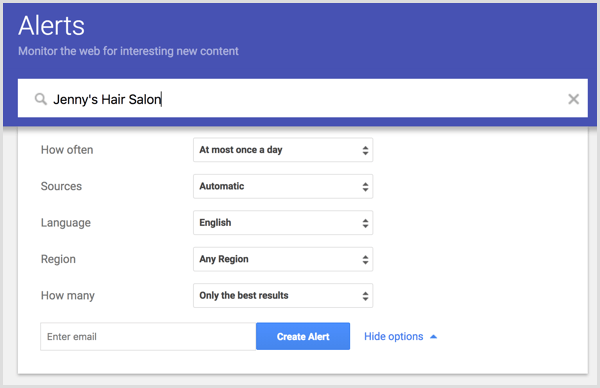
Talkwalker Alerts
Talkwalker Alerts calls itself a “Google Alerts alternative.” With the free help of Talkwalker, you can monitor everything online regarding your brand and track your competitors' activities, recent events, and so on.
To set up an alert, you need to define a keyword; enter your email address; choose your target language, number, and types of results; and select how often you want to receive notifications (daily or weekly).
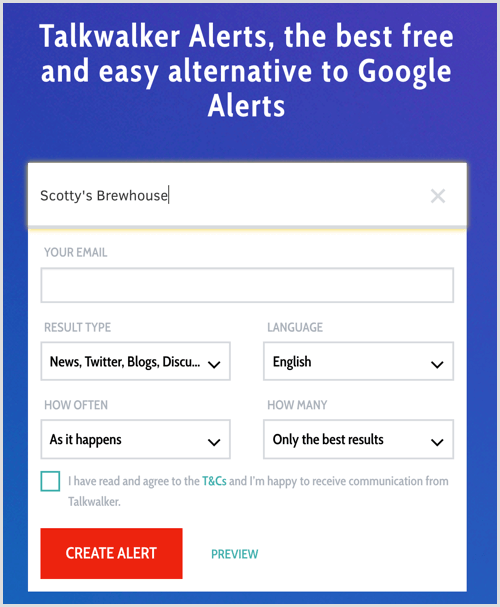
If your online presence is consistent with your reputation offline, great! If it's not, consider it an opportunity to build a solid presence as soon as possible.
#3: Craft a Social Media Policy to Guide Engagement That Supports Your Reputation Goals
The next step for building an A+ online presence is to have an effective social media policy in place. Social media policy refers to how a company and its employees interact online.
Here are a few key points to keep in mind when creating your policy:
- Don't allow staff members to freely post whatever comes to mind, particularly if the content is associated with your business. One reason for that is to protect your reputation. The other reason is liability. To keep things simple, you could tell your employees to label all of their posts as “personal” or create a pre-approval process for content, if necessary.
- Sensitive data should never be shared with the public, including financial, legal, and private client information.
- A captivating online reputation is all about professionalism. This also applies to publishing content on social media.
- Reserve the right to edit or delete potentially harmful content.
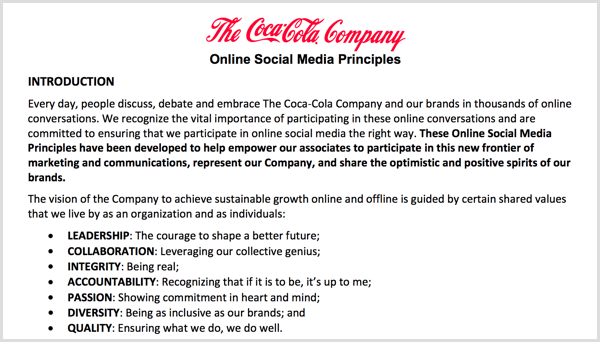
#4: Design a Social Media Content Strategy to Promote Your Desired Reputation
A social media content strategy outlines the subjects and topics your business or brand wants to focus on, the use of keywords and media types (articles, video, podcasts), and who's responsible for content creation and implementation, which doesn't necessarily have to be the same person. Here are some key points for your social media content strategy.
Identify Your Social Media Goals
The first step in creating a strategy is to define your social media goals. Do you want to win more fans or followers? Increase sales in your ecommerce store? Raise awareness of your brand?
Decide Which Social Platforms Will Help You Reach Your Ideal Customer and Attain Your Goals
Social media represents one of the most important opportunities for digital marketing. To build a solid online reputation, you need to identify the platforms that are relevant for engaging your current and future clients.

Discover Proven Marketing Strategies and Tips
Want to go even deeper with your marketing? Check out the Social Media Marketing Podcast! Publishing weekly since 2012, the Social Media Marketing Podcast helps you navigate the constantly changing marketing jungle, with expert interviews from marketing pros.
But don’t let the name fool you. This show is about a lot more than just social media marketing. With over 600 episodes and millions of downloads each year, this show has been a trusted source for marketers for well over a decade.
To illustrate, if you're looking to prospect C-suite executives, you may want to focus on LinkedIn and Twitter rather than Pinterest and Snapchat. If you want to focus on lifestyle, design, and apps, Pinterest and Facebook may represent the most compelling options.
Consider Your Competitors' Social Presence and Social Platform Demographics When Integrating Social Platforms
If a direct competitor has a healthy, engaged presence on a specific social media platform, odds are that the platform is a fit for your business as well. Many tools are available to help you research your competitors on social media. As a starting point, Fanpage Karma ($14.90 per month) and Talkwalker (free version) are great tools to evaluate both your own and your competitors' social media presences.
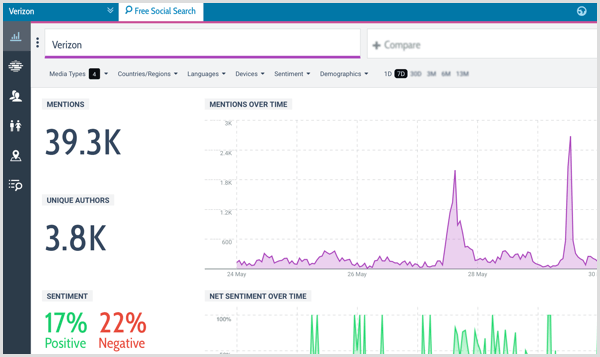
Additionally, there are a number of platform-specific tools that can help you gain demographic insights about your audience and competitors.
As an example, with Facebook's in-house reporting, you get access to post statistics and users' demographic data. You can also add certain pages to your watchlist to gain information on how well they perform. To access Facebook's Insights feature, navigate to your page and click the Insights tab in the Admin menu.

Instagram Insights requires you to create a business profile first. Then to access the reports, navigate to your profile page and click the graph icon in the top-right corner. Apart from insights on followers, you can see the performance of your posts, stories, and ads, as well as your profile in general.
For Twitter, use Twitter's own Analytics tool or Followerwonk (free version available). Twitter Analytics provides insights into how well your tweets have performed in the last 28 days including data on impressions, clicks, likes, and retweets. If you click on a particular tweet, you can access specific details about engagement.
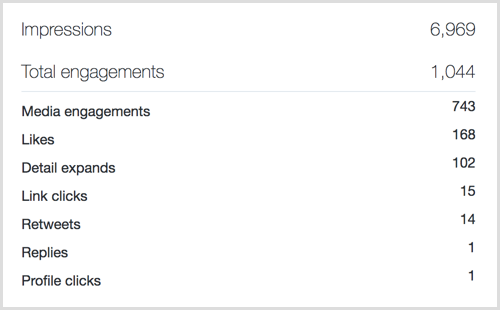
Followerwonk is a tool developed by Moz that gives you a full breakdown of your tweets and followers, too.
Compared to Facebook and Twitter, LinkedIn Analytics isn't as extensive, but it still offers some value. You can learn about the number of views and engagement of your long-form articles, as well as reader demographics.
With Pinterest's in-house analytics (available for business accounts), you get data on pin and board impressions, as well as performances and followers. Tailwind ($15 per month) is an all-in-one tool designed for both Pinterest and Instagram. It not only will identify the best time to publish new content, but also help you keep track of your competition, monitor conversations, and get insights into external content that was well-received by fans.
Research Content Ideas
To identify what content will resonate with your audience, you need to do some research. You can start by looking at what your competitors are doing. Keep in mind that you don't want to copy them. You're simply looking for inspiration for your own social channels.
To illustrate, you could set up a Twitter list of accounts you want to follow on the platform or subscribe to a list in your niche.
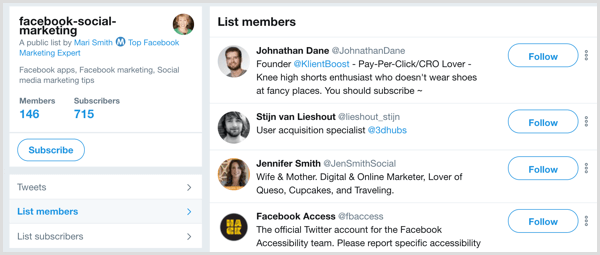
Establish a Content Publication Schedule and Assign Tasks
It's important to stay consistent and active on all of your profiles. Set up a social media content calendar to help your team keep track of what you're posting to different channels.
Respect Your Audience
Encourage your followers to engage with your content. Respond to questions and comments in a timely manner.
Monitor Results
The final step is to track key social media metrics. To make this process easier, set up a social media dashboard that includes the metrics that matter most to your business. A tool like Cyfe (free version available) makes it easy to add your social media channels to a custom dashboard.
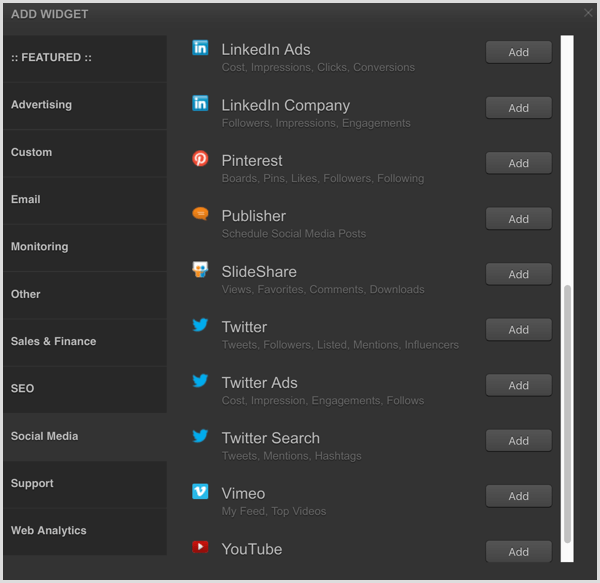
#5: Enhance Your Reputation With Blog Posts (Owned Media)
The key to success — articles that rank high on Google, generating additional traffic with high engagement — is to consistently publish content that provides value.
Thorough keyword research and high-quality content increase your chances to push undesirable content further down on the SERPs. Here are a few tips and tools to help you publish quality content that supports your reputation.
Use Relevant Keywords
Keyword research helps you learn the exact queries people type into search engines to find what they're looking for on the web. Include the right keywords in your content, and you're closer to staying top of mind with your target market. Google holds by far the biggest market share, so you can ignore Bing and other search engines.
With the free Google AdWords Keyword Planner, you get information on the monthly search volume of keywords, a list of suggested related keywords that users are searching for, and historical data. It also indicates whether people are more interested in a particular topic.
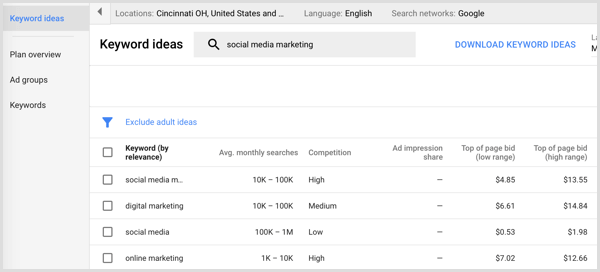
Using Keyword Planner might be confusing at first, but most people usually learn it quickly.
Strengthen Your Headlines
As the name implies, the CoSchedule Headline Analyzer will analyze your article headlines and offer suggestions for improvement.
The Headline Analyzer tool is simple and free to use. You can also sign up for a free 14-day trial to determine whether you like the other paid features provided by CoSchedule.
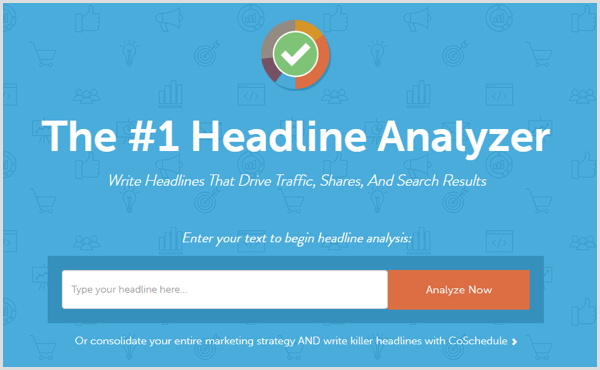
Write for Readability, Not Search Engines
You want to make your writing easy for the average user to read and understand. For instance, it's often better to use three short, simple sentences instead of a long, complicated one. There are two tools to help you with this.
Hemingway App helps you break down complex sentences and rewrite them in a clear, straightforward way. The free tool also highlights poor word choices and gives your text an overall readability score. The lower the score, the easier it is to read your text.
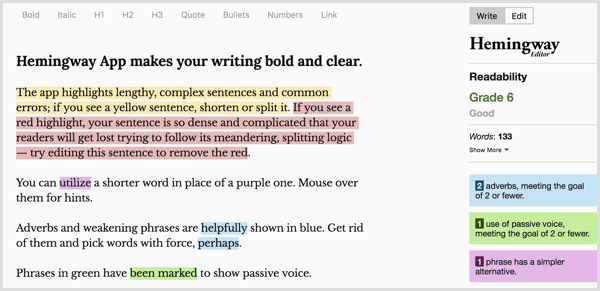
Grammarly will proofread your posts and find more than 400 different types of grammatical errors, detect plagiarism issues, and highlight poor word choices. It also provides you with context-optimized vocabulary suggestions, all for free.
Include Images
Using images, splitting up your posts into short paragraphs, and including tables and lists are great ways to make your articles more reader-friendly.
Pixabay and Pexels are two sources for stock photos, vectors, and illustrations that are free for personal and commercial use, and almost never require attribution.
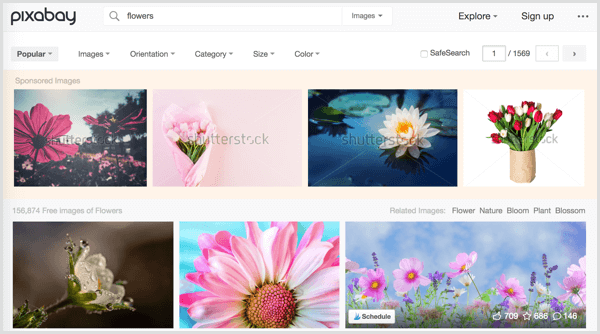
Analyze User Metrics
Analyzing user metrics helps you determine what type of content works best for your blog. Google Analytics is a free tool that will identify the origin of your site users (for example, through a Google search, Facebook, another website, etc.), length of session, pages of your website, type of device they use, and so on.
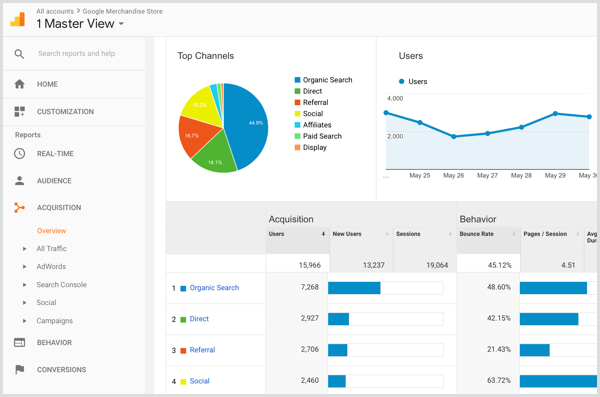
If you decide to implement Google Analytics on your site, you'll probably have to edit your privacy policy.
#6: Pursue and Manage Your Online Reputation
Now that you have the basics in place, it's time to execute. Engage on social media, publish appropriate content on your blog, and use the tools from Step #2 to continually check in on how your brand is perceived online.
Conclusion
Building and managing your online reputation means actively influencing the impression that your business leaves on users. The first step toward a sound reputation is deciding how you want your business to be perceived.
Paid media, earned media, owned properties, and most importantly, social media are four digital marketing channels that help shape your online reputation. With social media in particular, many tools are available to help accomplish daily tasks such as content creation and staying on a publishing schedule. Also, don't forget to have a social media policy and content strategy in place.
What do you think? What are you doing to stand out from your competition in a positive manner? How are you using social media to improve your reputation? Please share your thoughts in the comments below.
Attention Agency Owners, Brand Marketers, and Consultants

Introducing the Marketing Agency Show–our newest podcast designed to explore the struggles of agency marketers.
Join show host and agency owner, Brooke Sellas, as she interviews agency marketers and digs deep into their biggest challenges. Explore topics like navigating rough economic times, leveraging AI, service diversification, client acquisition, and much more.
Just pull up your favorite podcast app, search for Marketing Agency Show and start listening. Or click the button below for more information.

